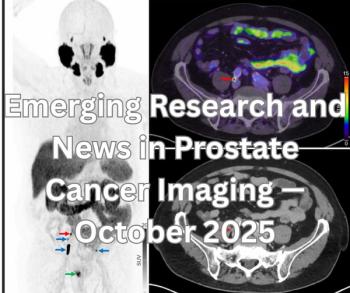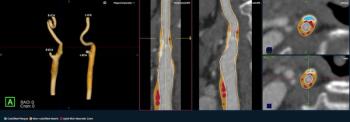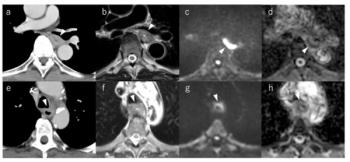
Is the Reversal of CT Commoditization Possible?
ECR 2016 reveals no end in sight to the commoditization trend in CT, but few lights of hope.
Technology depreciation, pricing pressure, new market entrants, innovation slowdown, and inter-modality competition; it seems all the ingredients are gathered to maintain an ongoing trend of commoditization in the CT equipment market. Can the latest-greatest innovations help reverse or slow down the trend?
Digital Radiography Stepping Ever Closer to CT’s Turf
One of the most salient facts from the ECR 2016 showfloor was seeing how ongoing innovation in digital radiography (DR) equipment, is leading the modality closer than ever to turf traditionally reserved to CT. In fact at some levels, DR is already stepping into CT’s territory, notably in the wider domain of orthopedic and ear, nose and throat (ENT) imaging (musculoskeletal [MSK], extremity, head & neck, maxillofacial, cartilaginous joint, etc.)
New acquisition modes of DR equipment, such as cone-beam CT (CBCT) and digital tomosynthesis, can now obtain 3D images which, at least to the naked eye, may seem close enough to those obtained with CT. Indeed, these modalities are leveraging the latest computing advances in iterative image reconstruction.
Advantages in Weight-bearing, Low-footprint, Low-dose Imaging
Unsurprisingly, the inter-modality competition between DR and CT is starting within areas where CT imaging falls short. For example, the fact that patients are necessarily laying down on the CT table makes it impossible to image them in their natural, weight-bearing position. Owing to much higher flexibility in patient positioning (sitting, standing, organ-specific, etc.), the new CBCT and motorized DR suites are posing serious competition to CT.
While these DR-based 3D imaging modalities are already well established in dental (for CBCT) and breast (for tomosynthesis) applications, soon they will be contending for certain referrals that would normally have gone to CT. These referral streams will be at stake especially if orthopedic practices and departments start adopting their own equipment, which is likely given the low-footprint and affordable price points. What is even more threatening to CT is that some of the procedures performed with these new modalities will qualify for reimbursement under CT billing codes.
CT-like Imaging and Multipurpose Equipment Blurring the Lines with CT
The clinical introduction of this new generation of DR equipment is being operated both by existing DR vendors as well as new entrants to the field. Digital tomosynthesis in DR was being shown at ECR 2016 by GE Healthcare and Shimadzu, and mentioned by Carestream Health on the new DRX-Evolution. Several vendors including Planmed, EOS Imaging, Newtom, or iCRco, are capitalizing on the untapped potential of 3D imaging using DR, while vendors from a dental imaging background such as Soredex and Sirona, are clearly planning on moving into radiology applications.
The same can be said about two other recent advances tied to DR: CT-like imaging using interventional X-ray equipment and multi-purpose radiography imaging equipment (eg, hybrid fluoroscopy/angiography/general radiography equipment). Siemens Healthcare’s new Multitom Rax perfectly exemplifies this ongoing convergence, as do Toshiba’s Ultimax-I and Xantara, Carestream’s DRX-Excel Plus, Canon’s DelftDI Xsense DR, GMM’s Opera Swing, and Stephanix’s D²RS.[[{"type":"media","view_mode":"media_crop","fid":"47092","attributes":{"alt":"Nadim Michel Daher, Industry Principal, Medical Imaging and Imaging Informatics, Frost & Sullivan","class":"media-image media-image-right","id":"media_crop_8261413128160","media_crop_h":"0","media_crop_image_style":"-1","media_crop_instance":"5519","media_crop_rotate":"0","media_crop_scale_h":"0","media_crop_scale_w":"0","media_crop_w":"0","media_crop_x":"0","media_crop_y":"0","style":"height: 250px; width: 200px; border-width: 0px; border-style: solid; margin: 1px; float: right;","title":"Nadim Michel Daher, Industry Principal, Medical Imaging and Imaging Informatics, Frost & Sullivan","typeof":"foaf:Image"}}]]
These exciting developments are made possible by the latest advances in flat-panel detectors (FPD), which allow for both diagnostic-grade static imaging, as well as high-resolution dynamic imaging. Currently, these premium FPDs are only available from tier 1 manufacturers - notably Thales and Varian. However, next-tier FPD makers are actively working to narrow the gap - notably Canon, the new owner of Toshiba Medical Systems, and Carestream.
Increasing Pricing Pressure from Growing Contenders in High-End CT
Inter-modality competition is threatening CT’s positioning in the modality spectrum, mainly the lower-end perspective of ‘bread-and-butter’ procedures. However, high-end CT is facing commoditization through forces organic to CT, namely the move up-market of newcomers into high-end CT. Two notable examples are the ascension of Samsung and Neusoft, both of which have positioned in the 128-slice segment of CT, and claiming higher cost efficiency with price points that may be up to 30% below comparable systems from the established vendors.
As Samsung prepares, once the regulatory approvals are cleared, for a global launch of its new NExCT7 system shown at RSNA 2015 and ECR 2016, and as Neusoft uplifts its CT product portfolio with the NeuViz 128 it launched in mid-2015, the tension in the CT industry is mounting exponentially. The big question on the minds of traditional vendors is whether these systems allow the up-and-coming vendors for a “me too” statement, or whether technology and product innovation by these vendors will also come into play.
New Premium CT Developments to the Rescue
Similar to RSNA 2015, ECR 2016 brought further confirmation that divergence is taking place in the Big Four vendors’ direction with premium CT. Whether this is a ‘good thing’ or a ‘bad thing’ in fighting commoditization is an open question. Ever since the four vendors agreed to end the ‘Slice Wars’ a few years ago, they seem to have concentrated their research and development spending on different ‘premium’ capabilities of CT.
The latest developments show GE Healthcare pushing towards higher spatial resolution and potential for multi-energy imaging with the new Gemstone detector, which is the foundation of the new Revolution family of CTs. Meanwhile, Toshiba Medical (now part of Canon) continues to exploit detector coverage width to differentiate its offerings in trauma and cardiac applications. Siemens Healthcare wants to demonstrate that dual-source CT is the only way to achieve temporal resolution high enough to consistently image any patient in high-acuity settings, and keep clinical standards in cardiac imaging at their highest.
CT’s Fight-back in Functional Imaging
However, the most promising direction for premium CT is the one Philips Healthcare has been capitalizing on: to develop the spectral imaging capabilities of CT through clinically-validated dual-energy and even multi-energy CT imaging. Indeed, this development route is the only one that seems likely to open up brand new avenues for the growth of CT. As this unfolds, CT will be able to claim a stronger position in functional imaging by developing into clinical areas traditionally reserved to modalities such as magnetic resonance (MR) or molecular imaging.
[[{"type":"media","view_mode":"media_crop","fid":"47091","attributes":{"alt":"Four dimensions Premium CT is evolving into. Though the relationship is not exclusive to each vendor, the emphasis is more marked toward one dimension.","class":"media-image","id":"media_crop_4513729620590","media_crop_h":"0","media_crop_image_style":"-1","media_crop_instance":"5518","media_crop_rotate":"0","media_crop_scale_h":"0","media_crop_scale_w":"0","media_crop_w":"0","media_crop_x":"0","media_crop_y":"0","title":"Four dimensions Premium CT is evolving into. Though the relationship is not exclusive to each vendor, the emphasis is more marked toward one dimension.","typeof":"foaf:Image"}}]]
Newsletter
Stay at the forefront of radiology with the Diagnostic Imaging newsletter, delivering the latest news, clinical insights, and imaging advancements for today’s radiologists.

































